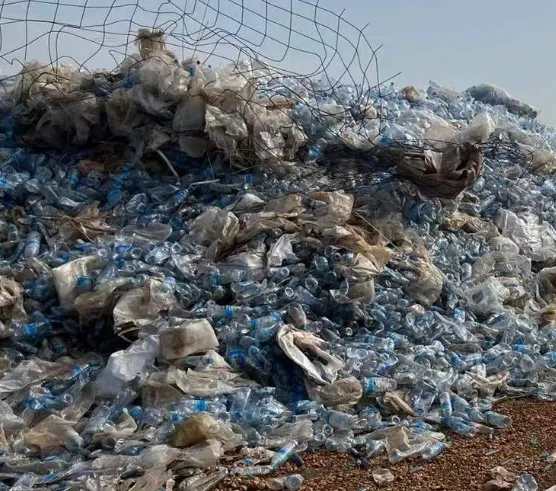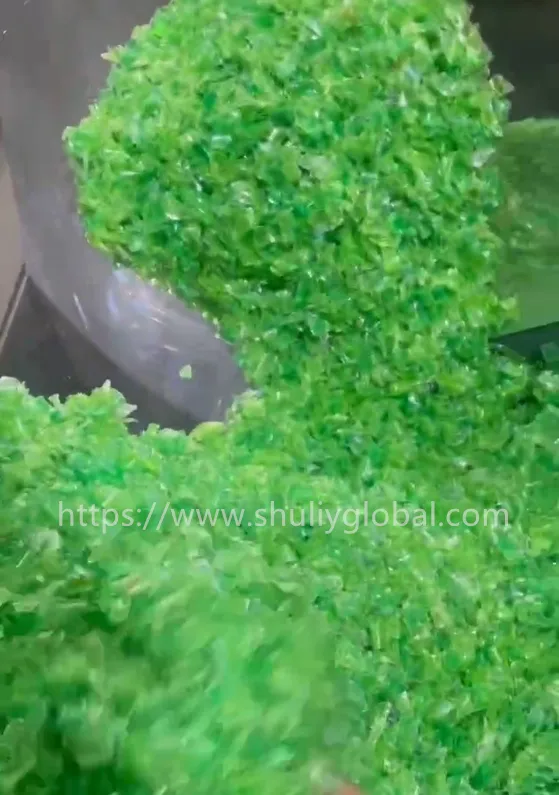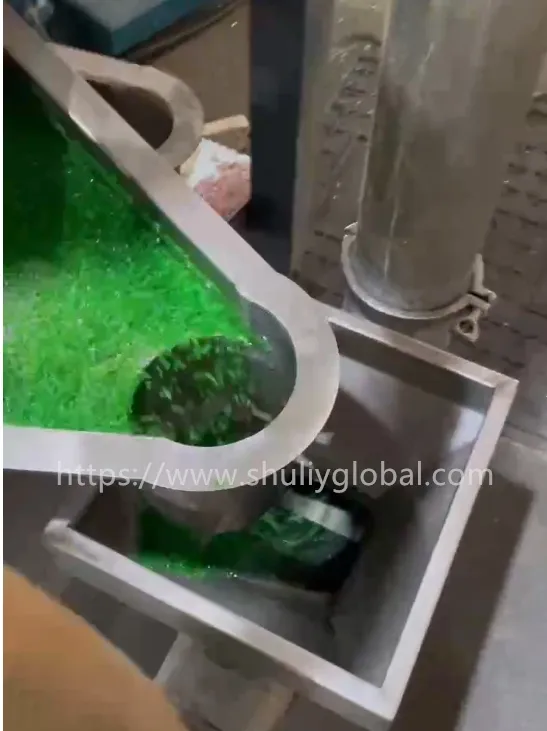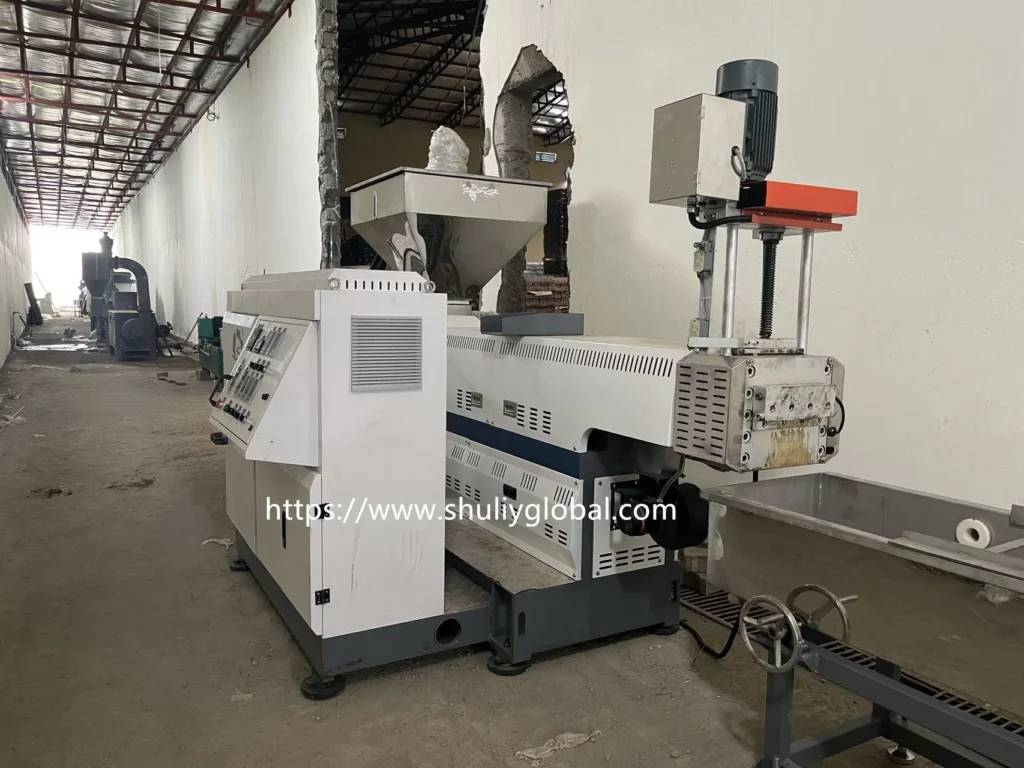Introduction
La demande mondiale de matériaux durables a suscité une grande attention de la part de l’industrie de la fabrication de plastique recyclé. Alors que les problèmes environnementaux continuent de s’intensifier, les industries du monde entier se tournent vers un modèle d’économie circulaire pour réintégrer les déchets dans le cycle de production. Les plastiques recyclés jouent un rôle essentiel dans ce modèle et apportent une solution viable au problème croissant des déchets plastiques. Cependant, la technologie et les processus impliqués dans le recyclage des plastiques sont très complexes et l’industrie est confrontée à de nombreux défis pour parvenir à l’efficacité et à la cohérence.
Une grande quantité de déchets plastiques pénètre dans le sol et les océans, polluant gravement les sols et les masses d'eau et menaçant l'espace de vie humain. Comment réduire la pollution plastique et réaliser l’utilisation des ressources des déchets plastiques est un problème commun auquel le monde est confronté. Cet article explore la technologie de fabrication du plastique recyclé dans l’industrie de la fabrication du plastique recyclé.
Qu'est-ce que le plastique recyclé ?
Le plastique recyclé fait référence au processus de recyclage des déchets plastiques par le biais d'un prétraitement tel que le recyclage, le nettoyage et le tri, puis de leur transformation en matières premières plastiques par des méthodes physiques ou chimiques telles que la granulation par fusion et la modification. Il est appliqué aux textiles, aux emballages d'aliments et de boissons, aux matériaux de construction de maisons et à d'autres domaines. C’est l’un des moyens de parvenir à un développement durable des plastiques.
L'importance des plastiques recyclés
Les plastiques sont devenus un élément indispensable de la vie moderne, des emballages aux pièces automobiles. Cependant, la durabilité des plastiques les rend non seulement très utiles, mais augmente également leur impact environnemental, car ils peuvent rester dans l’environnement pendant des centaines d’années. Le recyclage des plastiques réduit non seulement la quantité de déchets qui finissent dans les décharges et les océans, mais préserve également les ressources naturelles en réduisant le besoin de production de plastique vierge.
Types de plastiques recyclés
Les plastiques recyclés sont classés en fonction du matériau d'origine et du processus de recyclage. Les types les plus courants comprennent :
1. Plastiques recyclés post-consommation (PCR) : Ces plastiques proviennent de déchets ménagers ou commerciaux, comme des emballages et des bouteilles usagés.
2. Plastiques recyclés post-industriels (PIR) : Ils proviennent de déchets de fabrication, tels que des chutes et des chutes issues du processus de production.
3. Plastiques marins : Il s'agit de plastiques collectés dans les océans, les rivières et autres plans d'eau, qui sont ensuite traités et recyclés.
Chaque type de plastique recyclé présente ses propres défis et nécessite des technologies spécifiques pour garantir que le produit final répond aux normes de l'industrie.
Processus et technologies de recyclage
Le processus de fabrication du plastique recyclé comporte généralement plusieurs étapes clés : la collecte, le tri, le nettoyage, le déchiquetage, le séchage, la fusion et la granulation par extrusion. Cependant, les progrès technologiques ont introduit des méthodes plus sophistiquées pour améliorer l’efficacité et la qualité de la production.
1. Collecte et tri
La première étape du recyclage implique la collecte et le tri des déchets plastiques. Les technologies de tri avancées, telles que la spectroscopie proche infrarouge (NIR), ont considérablement amélioré la précision et la rapidité de séparation des différents types de plastiques. Ces technologies peuvent identifier et trier les plastiques en fonction du type de polymère, de la couleur et même de la présence de contaminants, garantissant ainsi que le processus de recyclage démarre avec un flux de matériaux propre et bien trié.
Certains projets aux financements limités choisissent également de trier les plastiques manuellement.
2. Nettoyage et préparation
Après tri, les déchets plastiques sont soigneusement nettoyés pour éliminer les étiquettes, adhésifs et autres contaminants. Le nettoyage par ultrasons et le nettoyage chimique font partie des technologies utilisées pour améliorer ce processus, garantissant que le plastique est exempt d'impuretés pouvant affecter la qualité du matériau recyclé.
3. Concassage et granulation
Après le nettoyage, le plastique est broyé en petits morceaux ou granulé en particules uniformes. Les concasseurs et granulateurs avancés disposent désormais de fonctionnalités telles que des systèmes de contrôle intelligents et des mécanismes de réglage automatique pour optimiser la taille des particules et réduire la consommation d'énergie pendant le processus.
Les flocons de plastique broyés sont ensuite fondus et extrudés en bandes.
5. Les bandes de plastique extrudées passent dans une piscine d'eau froide, refroidissent, puis entrent dans le granulateur pour être découpées en granulés de plastique recyclé de taille uniforme.
6. Composition et incorporation d'additifs
Pour améliorer les performances des plastiques recyclés, les fabricants ajoutent généralement des charges, des stabilisants et d'autres additifs pendant le processus de composition. La dernière technologie de mélange permet de contrôler avec précision l'incorporation de ces additifs, afin que le plastique recyclé puisse répondre à des normes de performance spécifiques, telles qu'une résistance aux UV ou une résistance à la traction accrue.







